On 16 January 2025, Mars reaches opposition.
While there's been something of a planet drought for the first half of 2024, this is going to change as we head into autumn, and Mars is one planet that will be improving as we head into winter, ahead of its opposition in the New year.
Mars will grow steadily larger and brighter, meaning there’s plenty to see in the run-up.
Here we’ll explore the exciting phenomena we can observe before and after Mars opposition.
For more stargazing advice, find out what's in the night sky tonight, listen to our weekly Star Diary podcast or sign up to receive the BBC Sky at Night Magazine e-newsletter.

Mars opposition explained
Opposition occurs when an outer planet is opposite the Sun in the sky.
Sun, Earth and planet all lie in a straight line, with Earth in the middle, and at this time the planet is due south at midnight and visible all night.
We don’t get a Mars opposition every year, nor are they all favourable for UK observers.
This is due to the shape of the Martian orbit.
All planetary orbits are slightly elliptical, but the Martian one is more so than Jupiter’s and Saturn’s.
As a result, Mars comes to opposition once every two years.
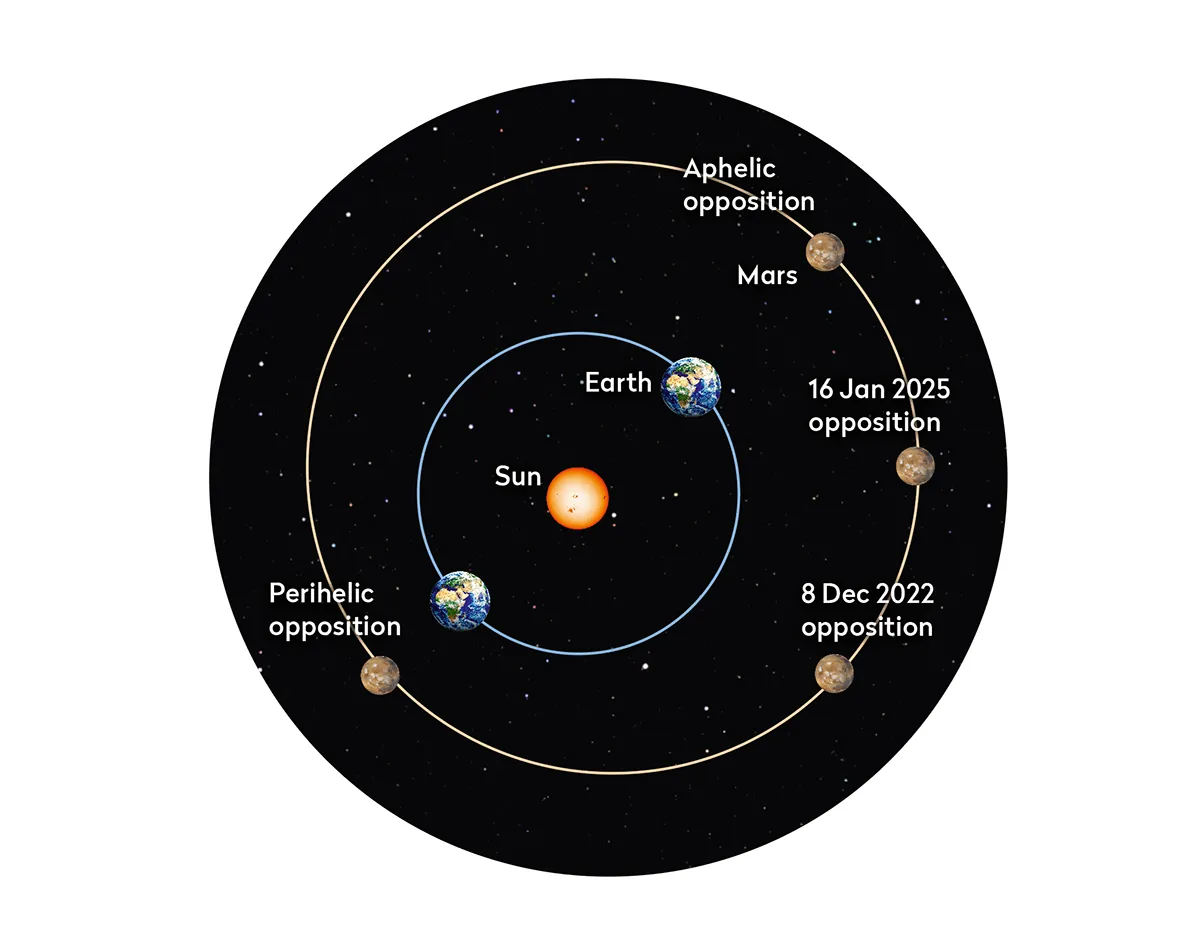
The position of Mars in its orbit dictates its altitude in our skies at opposition.
In a perihelic opposition, Mars is at (or near) perihelion (its closest point to the Sun).
The planet is large and bright, but low down for Northern Hemisphere observers.
In aphelic oppositions, Mars is at its furthest point from the Sun and has a small apparent diameter, but is high in UK skies.
How tilt affects the Mars opposition we see
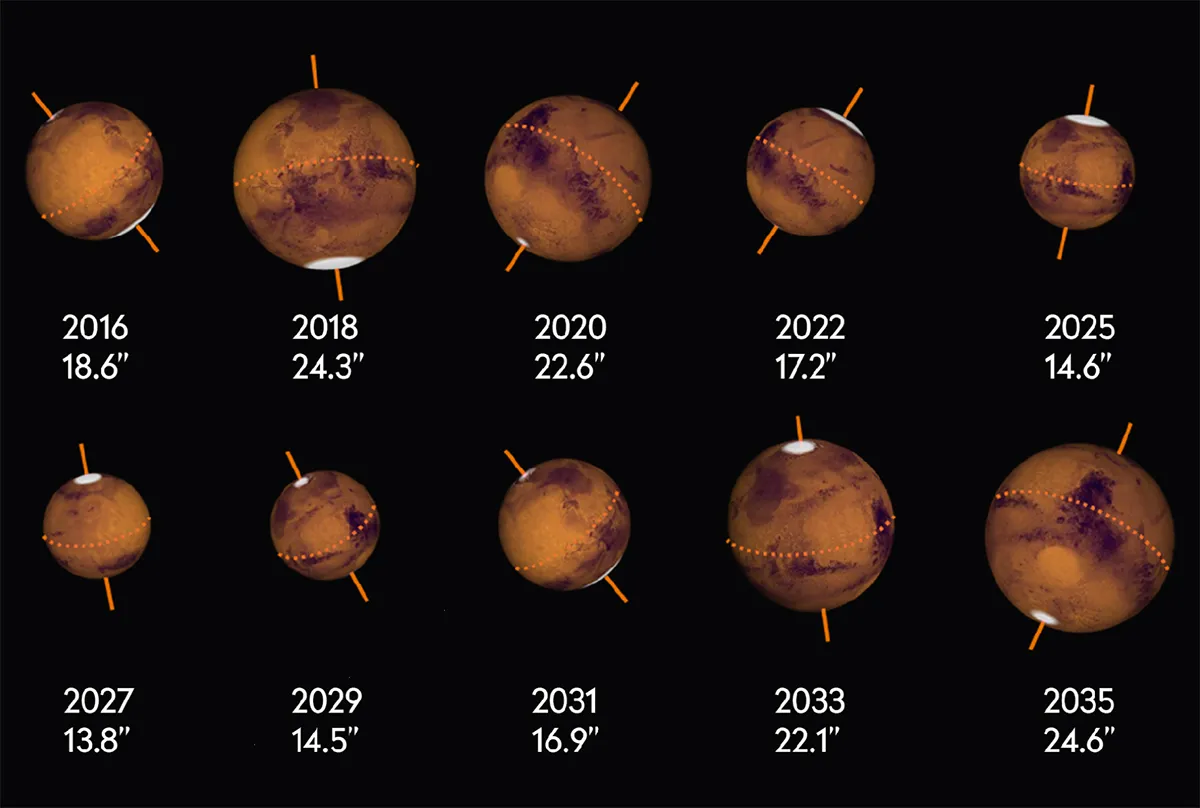
The type of opposition affects not only altitude and apparent diameter, but also the tilt of Mars as we see it from Earth.
Mars has an axial tilt of about 25° and the tilt, along with the orbit, means that during perihelic oppositions the southern hemisphere of Mars is tilted towards us.
The tilt can be quite pronounced, meaning we have splendid views of the southern polar cap and surrounding regions.
During aphelic ones, the northern hemisphere is presented and it can be almost impossible to see the far south.
Transitional oppositions tend to favour the equatorial regions and so they’re a chance to see both the north and south caps at the same time.
It will be helpful to learn some key Martian features, as this will enable you to identify the more obscure areas of Mars.
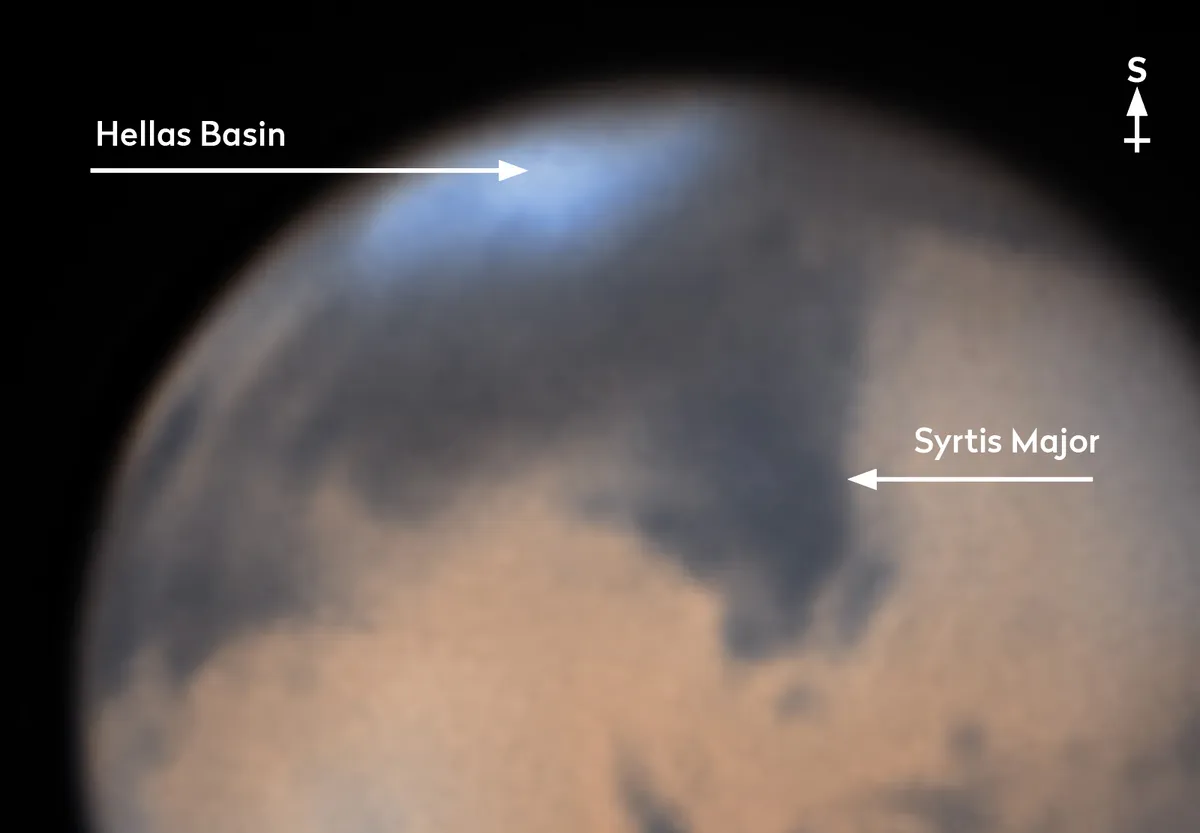
The dark Syrtis Major is a good starting point as it has a very distinctive shape.
Mars rotates once in 24 hours 37 minutes, so it takes about three weeks to view the entire Martian surface from one specific location on Earth.
The USA, for example, will see a different part of Mars compared to the UK due to the time difference, and this is why international scientific cooperation is essential during a Mars opposition.
Seasons on Mars
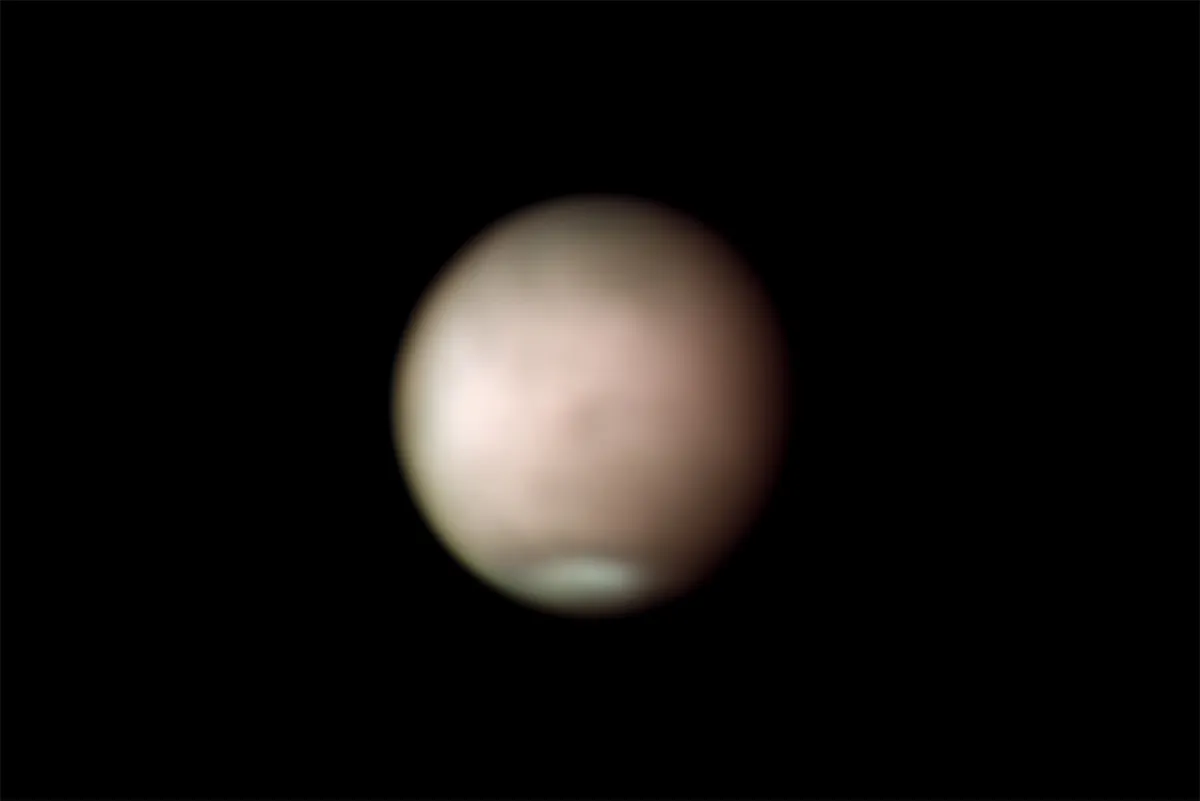
Mars is a dynamic world. Just like Earth it undergoes well-defined seasons.
Although the Martian atmosphere is thinner than Earth’s, it is sufficient to produce brilliant white clouds, dust storms and winds travelling half the speed of sound – and all of this is visible in our telescopes.
Winds blow Martian dust about and, over many years, the new accumulations of dust can change certain surface features.
Mars’s seasons bring many different phenomena, but how do we define a season on Mars?
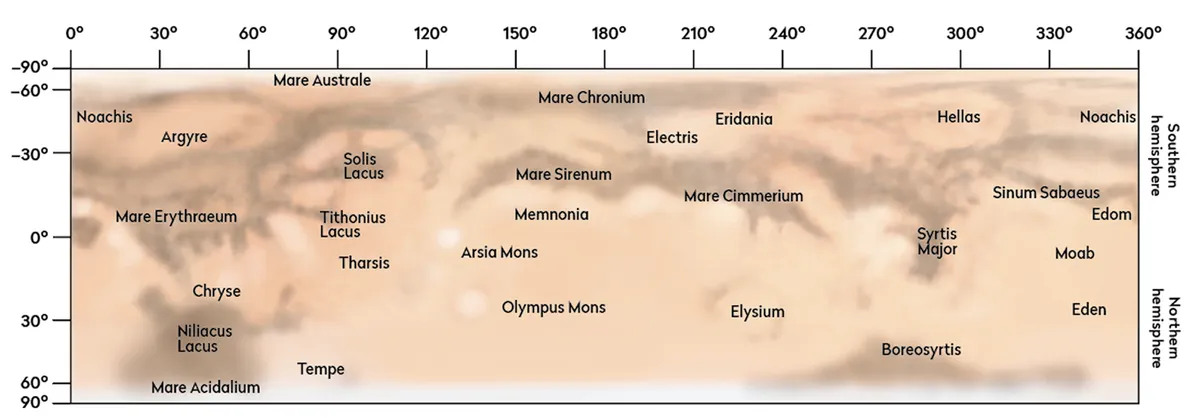
Astronomers long ago solved this problem and invented a quantity called ‘areocentric longitude’ or ‘Ls’. We split the Martian orbit into 12 months (see the map above).
Each of these months is 30° in Ls.
Spring equinox in Mars’s northern hemisphere occurs at Ls = 0° (this is also autumn in the south) and ‘month 1’ runs from 0° to 30°.
Northern summer occurs at Ls = 90°, while the autumn equinox is at Ls = 180°.
Finally, the northern winter solstice occurs at Ls = 270°.
Observing Mars with kids
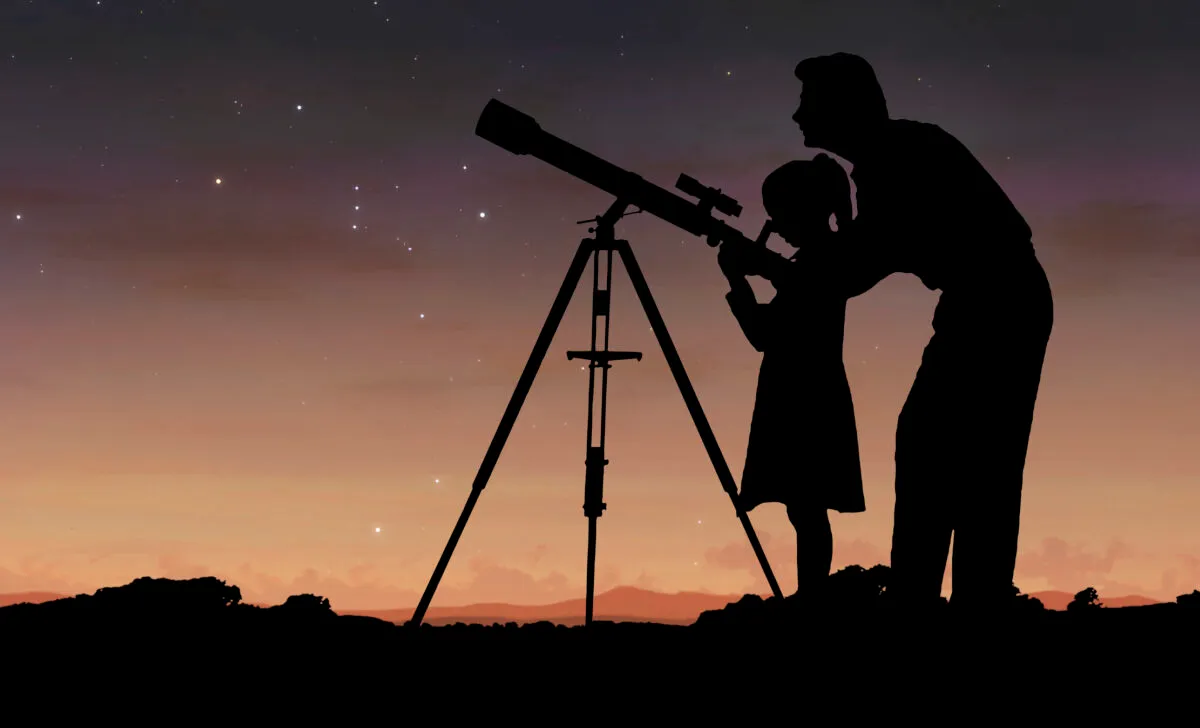
Mars will get bright and easy to pick out in the night sky as it gets close to opposition in January 2025.
Describe it as a bright, orange light in the sky and let your young astronomers try to find it for themselves.
Its brilliance is a bit of a giveaway, but the colour is interesting too.
Ask how you’d describe the colour.
Mars only reaches this brilliance every two-and-a-bit years, due to the way both Earth and Mars orbit the Sun, so explain that this is a special time for the planet.
If you have a telescope, take a look and ask what, if anything, can be seen.
For more advice, read our guides stargazing for kids and the best telescopes for kids.
Observing Mars through a telescope

Mars becomes a viable target for medium and large telescopes when it has an apparent diameter of 6 arcseconds or more.
You can check what the Ls will be on a date with the free software WinJupos and planetarium software like SkySafari.
When Mars has more of its northern hemisphere tilted towards us, medium-sized telescopes should pick up the north polar cap, which is slowly melting.
In contrast, the southern polar cap will be very small, having melted over the summer.
September is the time to start looking for white clouds: they collect in large basins like Hellas, Argyre and Eridania.
The large volcanoes in the Tharsis plateau also attract them, and here they can form distinctive ‘W’-shaped cloud patterns.
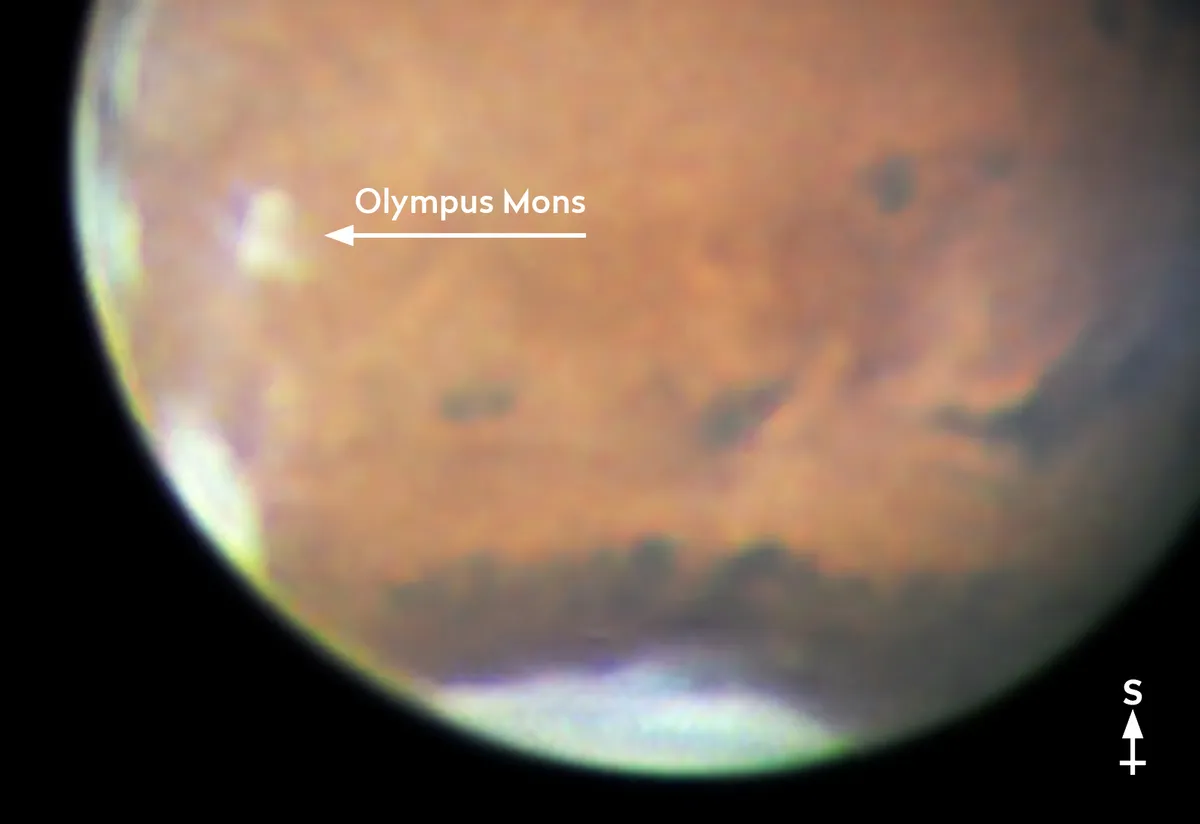
Bright clouds and dust storms
White clouds can become quite brilliant and it is fascinating to watch them, particularly if they are close to the morning limb, as they often melt away during the course of a Martian sunrise.
If you use optical filters, try a blue or violet filter as these will make the clouds stand out.
These begin life as small orange clouds but can grow to obscure whole regions or a whole hemisphere.
When large dust storms occur, they throw vast quantities of dust into the atmosphere.
When the dust settles, often features appear altered, which is why Mars maps from the 1950s look different to today’s.

Dust storms can start anywhere, but usually in the south.
Watch out for small orange clouds in the basins of Hellas, Noachis and Argyre.
Syrtis Major and Solis Lacus are also good places to search.
Edom flashes
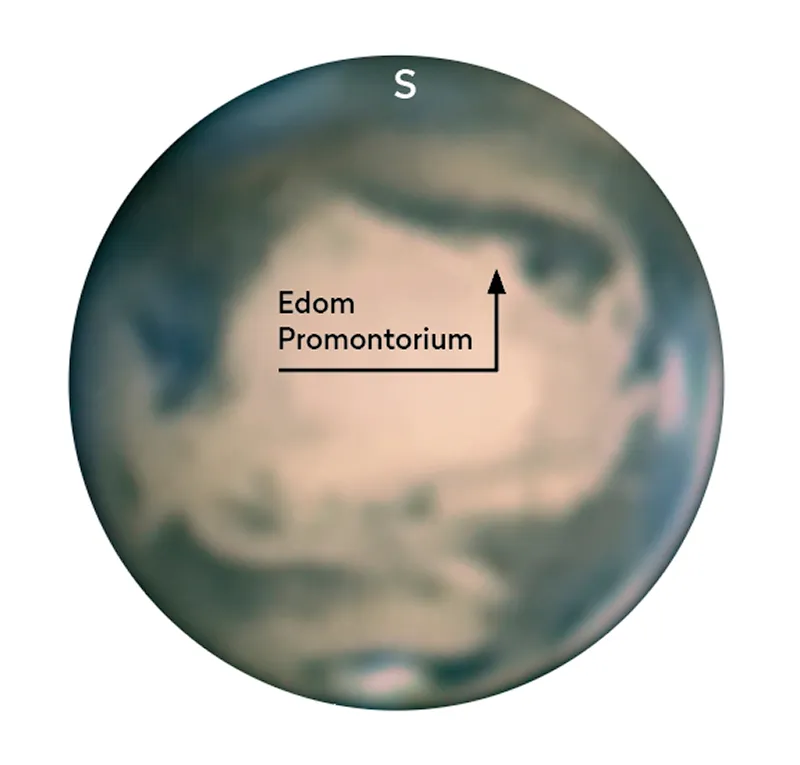
There is a fascinating phenomenon known as ‘Mars flashes’, brilliant ‘starlike’ flashes that can last for a number of seconds.
They occur in two regions: Edom and Tithonius Lacus (see map, further up this page), and although occasional flashes have been reported elsewhere, these are the main two sites to keep an eye on.
The flashes are thought to be caused by reflections from ice crystals in clouds over these regions.
The geometry has to be just right. If you were standing at these sites, Earth and the Sun would have to be overhead near the zenith.
This special alignment between the Sun, Earth and Mars is very rare, and doesn’t necessarily occur at each opposition.
Keep an eye on Hellas, Argyre and Eridania, as bright, white clouds are likely to collect around here.
How to observe Mars dust storms
Although the Martian atmosphere is tenuous, it is quite capable of producing powerful dust storms. Winds of half the speed of sound have been recorded.
Typically, the dust storm season starts at about Ls =240° and it continues to Ls=0°.
The Martian dust storm season has been studied in great detail, and there are three types of dust storm which occur:
- Local: these dust storms are confined to very small regions like a corner of the Hellas Basin.
- Regional: these dust storms may cover an entire region like Syrtis Major, or indeed a whole hemisphere.
- Global: the largest, these dust storms cover the entire planet. During this time the entire globe can become featureless even to large telescopes.
Local and regional dust storms tend to be the most frequent. During the previous opposition in 2018, I was able to observe a regional dust storm at the Lowell Observatory, in Flagstaff, Arizona (pictured below)
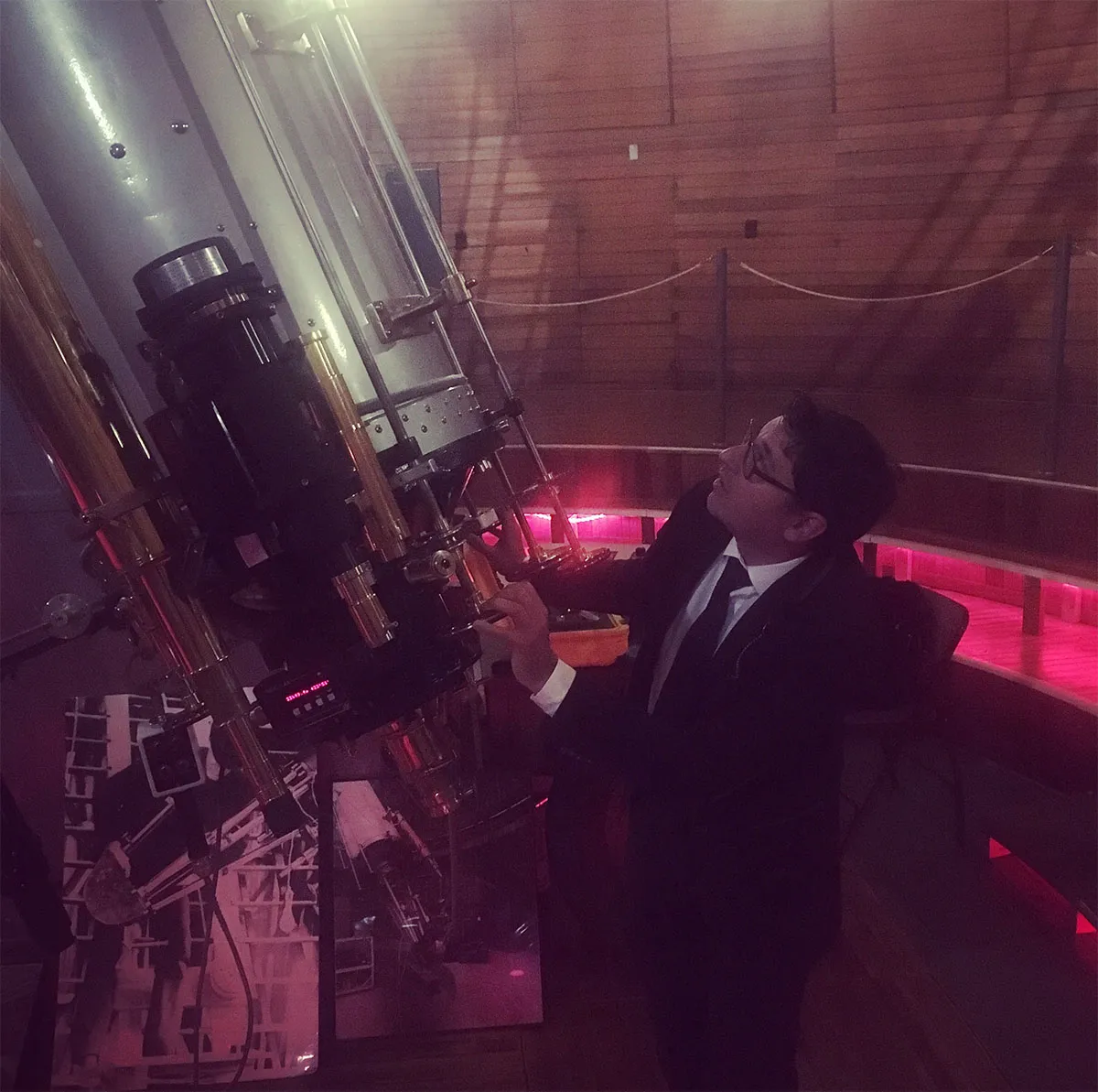
Truly global dust storms are quite rare – two prominent ones occurred in 1975 and 1977, around the time that the Viking missions were approaching Mars.
There are a number of sites on Mars that are well known for producing storms, including the Hellas Basin, Solis Lacus, Noachis and Chryse, and you should survey these regions whenever you can.
Storms always start off as bright yellow or orange clouds. Local ones will require a 150mm telescope or larger to be seen, but regional ones can be visible in smaller instruments.
You’ll find a red (W25), orange (W21) or yellow (W15) filter will also help enhance dust clouds and make them easier to see.
If a large storm does erupt, it is a good idea to record its progress; you can do this by sketching the region and plotting the size and location of the dust storm as it changes over time.
Have you managed to spot Mars in the night sky, or even photograph it? Let us know by getting in touch via contactus@skyatnightmagazine.com or Facebook, Twitter and Instagram.
This guide originally appeared in the October 2022 issue of BBC Sky at Night Magazine.
